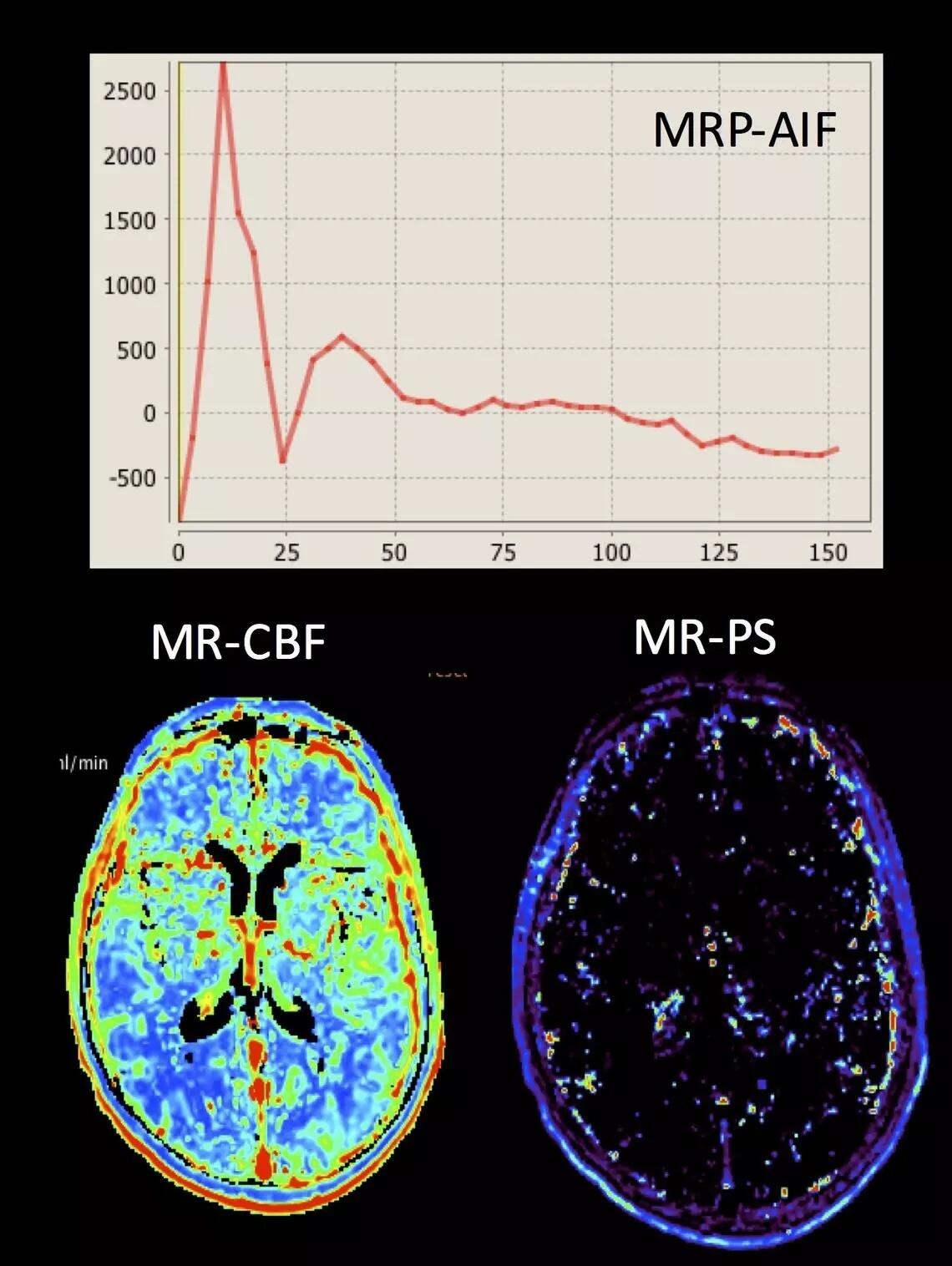Quantitative Imaging of Structure and Function
Development and application of new MR methods for quantifying brain morphology and physiology.
We focus on measuring physiological (functional) measures including blood flow, white matter integrity, brain connectivity, tissue susceptibility and relaxation. Our applications include dementia and other neurodgenerative conditions, as well as brain tumours
Much of this developmental work occurs in partnership with research staff at the Calgary Image Processing and Analysis Centre (CIPAC). The work on developing perfusion and permeability methods is a collaboration with Ting Lee (Western University) and Marc Lebel. Quantitative susceptibility mapping (QSM) is a collaboration with Alan Wilman (Alberta).
Recent Sample Publications
- Lauzon ML, McCreary CR, Frayne R. Multislice T1 -prepared 2D single-shot EPI: analysis of a clinical T1 mapping method unbiased by B0 or B1 inhomogeneity. NMR Biomed. 2016; 29: 1056-69. doi: 10.1002/nbm.3566.
- Lauzon ML, McCreary CR, McLean DA, Salluzzi M, Frayne R. Quantitative susceptibility mapping at 3 T: comparison of acquisition methodologies. NMR Biomed. 2017; 30: e3492. doi: 10.1002/nbm.3492
- Thrippleton MJ, Backes WH, Sourbron S, Ingrisch M, van Osch MJP, Dichgans M, Fazekas F, Ropele S, Frayne R, van Oostenbrugge RJ, Smith EE, Wardlaw JM. Quantifying blood-brain barrier leakage in small vessel disease: Review and consensus recommendations. Alzheimers Dement 2019, 1-9.
- Loos WS, Souza R, Andersen LB, Lebel RM, Frayne R. Extraction of a vascular function for a fully automated dynamic contrast-enhanced magnetic resonance brain image processing pipeline. Magn Reson Med 2022; 87: 1561-73. doi: 10.1002/mrm.29054.
- Naji N, Lauzon ML, Seres P, Stolz E, Frayne R, Lebel C, Beaulieu C, Wilman AH. Multisite reproducibility of quantitative susceptibility mapping and effective transverse relaxation rate in deep gray matter at 3 T using locally optimized sequences in 24 traveling heads. NMR in Biomedicine 2022; 35: e4788. doi: 10.1002/nbm.4788.
Prospective Trainee Requirements
Interest in imaging of degenerative brain disorders with a degree (MSc preferred) in Biomedical, Computer or Electrical Engineering, or Physics. A good grasp of digital signal processing techniques, deconvolution methods and/or experience with numerical optimization/modelling methods beneficial. Must have good oral and written English communication skills.

Quantitative susceptibility mapping (QSM) image processing pipeline that estimates tissue susceptibility (𝛘) from MR magnitude and phase images.

Arterial input function (AIF), cerebral blood flow (CBF) and PS product maps.
